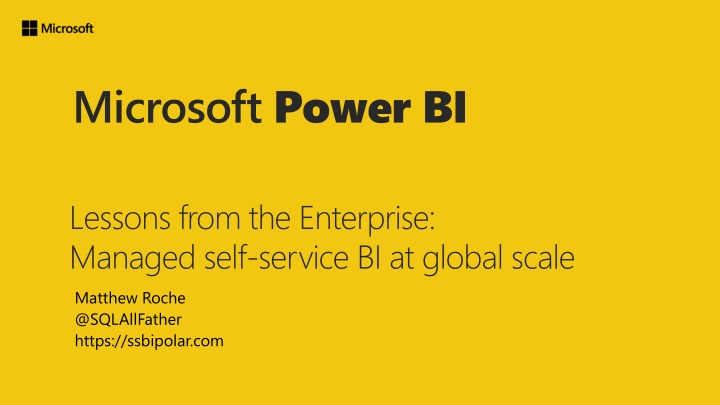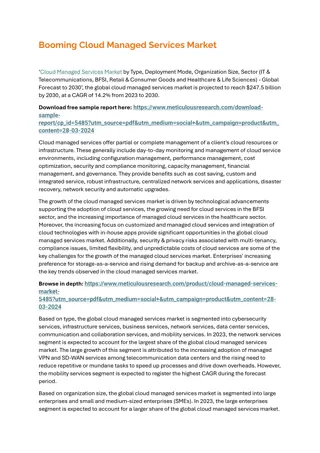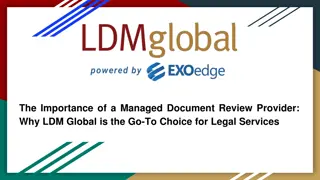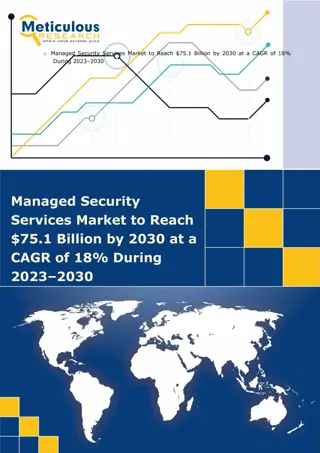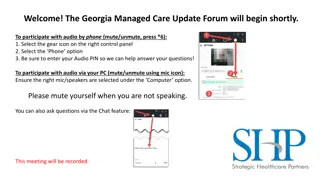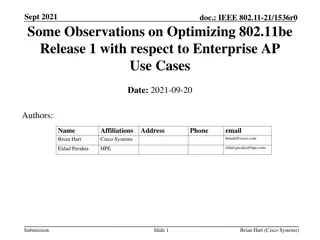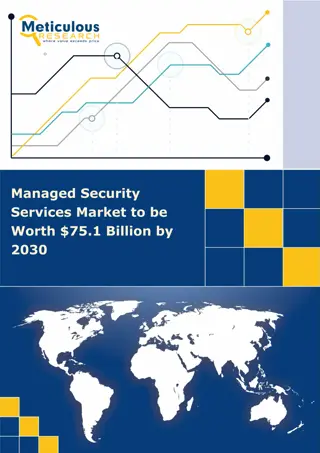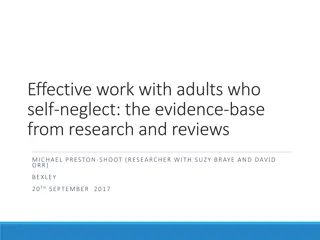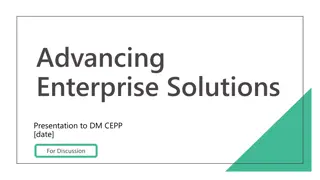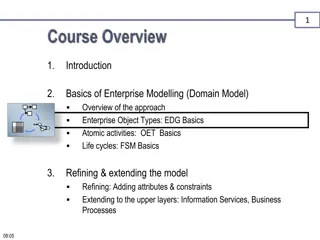Managed Self-Service BI at Global Scale - Lessons from Enterprise
This content delves into the nuances of self-service BI adoption in enterprises, discussing the dual nature of self-service BI tools as a two-edged sword. It explores strategies for leveraging the true and false edges of self-service BI, providing insights on maximizing strengths and addressing weaknesses. The narrative emphasizes the importance of understanding the capabilities of self-service BI for optimal use in enterprise BI scenarios.
Download Presentation

Please find below an Image/Link to download the presentation.
The content on the website is provided AS IS for your information and personal use only. It may not be sold, licensed, or shared on other websites without obtaining consent from the author.If you encounter any issues during the download, it is possible that the publisher has removed the file from their server.
You are allowed to download the files provided on this website for personal or commercial use, subject to the condition that they are used lawfully. All files are the property of their respective owners.
The content on the website is provided AS IS for your information and personal use only. It may not be sold, licensed, or shared on other websites without obtaining consent from the author.
E N D
Presentation Transcript
Microsoft Power BI Lessons from the Enterprise: Managed self-service BI at global scale Matthew Roche @SQLAllFather https://ssbipolar.com
Matthew Roche Introductions Power BI CAT team Enterprise BI body of knowledge
Self-service BI as a two-edged sword Agenda Reviewing key topics Three patterns of enterprise adoption
Learning from existing customers Addressing Technical Issues Plan Clear BI Strategy Exec Sponsor User Community Profile Data Quality Compliance, Security, Governance Infrastructure Adoption Plan Centre of Excellence Clear BI scenarios Product Gaps
Self-service BI tools are sometimes described as a two-edged sword
Why does this mean something that has or can have both favorable and unfavorable consequences ? It should instead mean something that can be used in multiple ways, with each way having specific strengths and weaknesses. Self-Service BI as a Two-Edged Sword When you know how to use the true edge and the false edge, you have significant advantages over an opponent with a single-edge sword. Rather than fearing your weapon, you should learn its capabilities for optimal use.
True Edge, False Edge - IT and SSBI True Edge Rising
True Edge, False Edge - IT and SSBI False Edge Rising
True Edge, False Edge - IT and SSBI False Edge / True Edge Combo
True edge: Strength, power, mechanical advantage. Use when possible. Plan to use the true edge. False edge: Weaker, more limited use cases, no mechanical advantage. Agile and quick. Use the false opportunistically, as necessary and appropriate. Self-Service BI as a Two-Edged Sword False edge and true edge in combination: Greater than the sum of its parts Both: Requires training and practice, and an understanding of each technique.
What do actual swords and edges have to do with Power BI? Does this analogy hold up? In most large organizations, BI starts from the top AND the bottom Change starts where the pain is felt the most, which could be in business or in IT but is usually more on the business side Business users need access to the BI data and tools that they need to complete their tasks, and they will will get it with or without IT support Successful enterprises embrace top-down and and bottom-up patterns of adoption The key to success is finding the right balance for the organization, and when to use each approach
Two sharp edges are dangerous only if you don t know they re both sharp
Avoid uncontrolled proliferation of BI apps Plan ahead for self- service BI success Implement processes Why Governance is Needed Drive Decisions Proper governance processes Reduce Risks Increase user adoption
Guide the SSBI efforts you cannot stop Plan ahead for self- service BI success Empower the SSBI users with tools and help Why Governance is Needed Define responsibilities Proper governance processes Encouraged desired behaviors Discourage undesired behaviors
Governance Model TIGHT CONTROLS EDW Permanent record Subject to compliance Push down content Reporting services BUSINESS UNIT DASHBOARDS, KPIS & SCORECARDS Push up content Power BI Desktop Excel or other reports Knowledge management Information sharing DEPARTMENTAL, TEAM OR GROUP REPORTING PROJECT REPORTING Personal/Private views Data science exploration PERSONAL REPORTING LESS CONTROLS
Governance Model Who Does What? TIGHT CONTROLS Business developed and maintained IT-developed and maintained EDW Permanent record Subject to compliance Push down content Reporting services BUSINESS UNIT DASHBOARDS, KPIS & SCORECARDS Consistent criteria and responsibilities Push up content Power BI Desktop Excel or other reports Knowledge management Information sharing DEPARTMENTAL, TEAM OR GROUP REPORTING PROJECT REPORTING Personal/Private views Data science exploration PERSONAL REPORTING LESS CONTROLS
Power BI Delivery Approaches IT-Managed Self-Service BI Business-Led Self-Service BI Corporate BI Power BI deployment modes Bottom-Up Approach Analysis using any type of data source; emphasis on data exploration and freedom to innovate Ownership: Business supports all elements of the solution Scope of Power BI use by business users: Data preparation, data modeling, report creation & execution Governed by: Business Blended Approach Top-Down Approach Utilization of reports and dashboards published by IT for business users to consume Ownership: IT supports all elements of the solution Scope of Power BI use by business users: Execution of published reports Governed by: IT A managed approach wherein reporting utilizes only predefined/governed data sources Ownership: IT: data + semantic layer Business: reports Scope of Power BI use by business users: Creation of reports and dashboards Governed by: IT: data + semantic layer Business: reports Power BI delivery: Power BI delivery: three approaches three approaches Ownership Transfer Over time, certain self-service solutions deemed as critical to the business may transfer ownership and maintenance to IT. It s also possible for business users to adopt a prototype created by IT.
Power BI Delivery Approaches IT-Managed Self-Service BI Business-Led Self-Service BI Corporate BI Power BI deployment modes Bottom-Up Approach Analysis using any type of data source; emphasis on data exploration and freedom to innovate Ownership: Business supports all elements of the solution Scope of Power BI use by business users: Data preparation, data modeling, report creation & execution Governed by: Business Blended Approach Top-Down Approach Utilization of reports and dashboards published by IT for business users to consume Ownership: IT supports all elements of the solution Scope of Power BI use by business users: Execution of published reports Governed by: IT A managed approach wherein reporting utilizes only predefined/governed data sources Ownership: IT: data + semantic layer Business: reports Scope of Power BI use by business users: Creation of reports and dashboards Governed by: IT: data + semantic layer Business: reports Power BI delivery: Power BI delivery: three approaches three approaches Ownership Transfer Over time, certain self-service solutions deemed as critical to the business may transfer ownership and maintenance to IT. It s also possible for business users to adopt a prototype created by IT.
Are you looking to build a Center of Excellence Team? Actions Use Teams / Yammer / SharePoint / Email Help support self-service reporting solutions Answer questions Run lunch and learns Governance videos / documentation Solution examples / videos FAQs Useful links to external support or training material
Are you looking to build a Center of Excellence Team? Start with the business! Actions Use Teams / Yammer / SharePoint provide both a community and a knowledge base Help support self-service reporting solutions empower users to build what you want them to build Answer questions AND recognize and encourage community members who do so as well Run lunch and learns make the training available when and where users need it Governance videos / documentation show how to use your data, not just the technology Solution examples / videos demonstrate the art of the possible FAQs include content for tools, technology, data sources, processes, and more Useful links to external support or training material incorporate this in your training content
Three emerging patterns from CAT team engagements - #1: Wild West Power BI Pro licenses are made available to most or all business users Office 365 enterprise licenses Other bulk purchases IT supports and maintains central data sources, and supports Power BI service and tools Additional Premium capacity added to support increased unmanaged application load Business users build and deploy solutions to meet their own requirements Results Duplicate, overlapping solutions Inconsistent numbers and values Reduced trust and satisfaction
Three emerging patterns from CAT team engagements - #2: Lockdown A central team in IT does all Power BI development Business has processes for submitting requirements IT has processes for prioritizing requests and delivering solutions IT supports and maintains Power BI service and solutions Results Gaps in required BI solutions Shadow data Multiple BI tools Reduced trust and satisfaction
Three emerging patterns from CAT team engagements - #3: Harmonious Balance Licenses and training are made available to appropriate business users Users receive the resources and knowledge they need to be successful Users are given clear guardrails to guide their successful adoption Pro license availability and access to Premium capacity often used as enforcement mechanisms IT supports and maintains central data, services and tools, and key BI solutions IT makes single sources of truth available to authorized business users increasingly involving dataflows IT provides guidelines for business developing solutions to meet their own requirements Business users build and deploy solutions - hand off to IT as appropriate, following processes Results Small IT teams can successfully support very large user bases Lower costs, more predictability, and an increasing momentum of growth and usage Increased trust and satisfaction
Three emerging patterns from CAT team engagements - #4: No size fits all There are many variations on these themes, but key factors include Clearly defined roles, responsibilities, and processes The right training resources for every persona don t forget content consumers! Shared resources and an open culture of data Business is empowered to meet its own needs IT is empowered to oversee, secure, and control A successful center of excellence involves engagement from both business and IT Without appropriate executive sponsorship, success is almost impossible don t forget content consumers!
The most important long-term success factors Training Training you can t use the tool you don t know you can t use the tool you don t know Business leadership make business Culture promote, recognize, and reward proper behaviors Flexibility and growth no plan survives contact with the enemy, so plan proactively to be adaptable Executive sponsorship and support success only lasts as long as executive leaders support your efforts business the face of business business intelligence
Questions Answers
